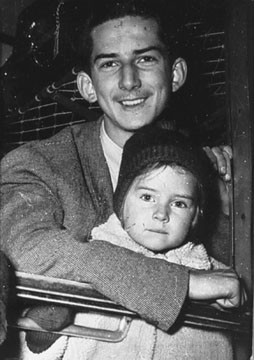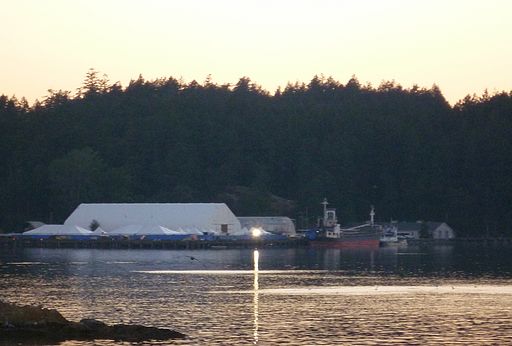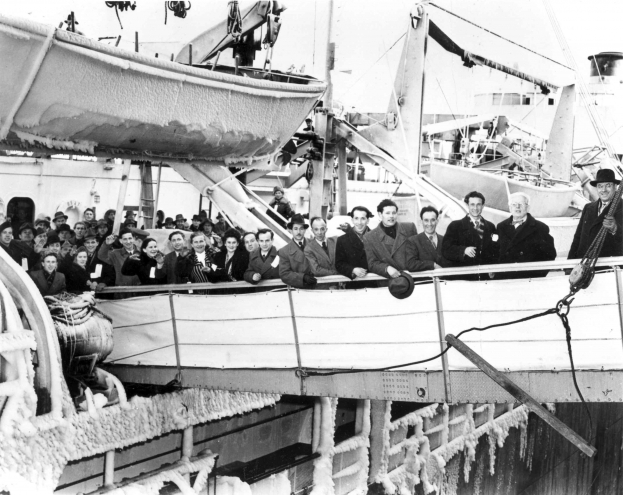Browse "Immigrants and Refugees"
-
Article
German Canadians
German Canadians — that is, Canadians who report their ethnic origin as solely or partly from Germany or of German ancestry — are one of Canada's largest ethnic categories of European origin. At the time of the British Conquest of New France, nearly 200 families living in the St. Lawrence Valley were of German origin. British North America, and then Canada, would receive six cohorts of immigration throughout their history, the most recent of which consisted of displaced people at the end of the Second World War. In the 2021 Canadian census, 2,955,695 Canadians (8.1 per cent of the population) reported German origins. Around 303,655 people in the country reported German as their mother tongue.
"https://d2ttikhf7xbzbs.cloudfront.net/media/media/3aa26d95-7ea8-4a62-b55e-dee5d5678e87.jpg" // resources/views/front/categories/view.blade.php
https://d2ttikhf7xbzbs.cloudfront.net/media/media/3aa26d95-7ea8-4a62-b55e-dee5d5678e87.jpg
-
Article
Greek Canadians
Greek immigration to Canada began early in the 19th century. Greeks from the islands (e.g., Crete, Syros and Skopelos) and from the Peloponnesus, especially the poor villages of the provinces of Arcadia and Laconia, settled in Montreal as early as 1843. However, in 1871 only 39 persons of Greek origin were known to be living in Canada. Greek immigration, sporadic prior to 1900, increased considerably in the early 20th century as a result of poverty, war and political upheavals at home. The 2016 census recorded 271, 405 Canadians of Greek origin (141,580 single and 129,830 multiple responses.)
"https://d2ttikhf7xbzbs.cloudfront.net/media/new_article_images/GreekCanadians/Greek_Immigrant_Statue_Montreal_Park_Ex .jpg" // resources/views/front/categories/view.blade.php
https://d2ttikhf7xbzbs.cloudfront.net/media/new_article_images/GreekCanadians/Greek_Immigrant_Statue_Montreal_Park_Ex .jpg -
Article
Gurbax Singh Malhi
Gurbax Singh Malhi, PC, Member of Parliament, realtor (born 12 October 1949 in Punjab, India). Gurbax Singh Malhi is an Indian-born Canadian politician and a former member of Parliament first elected to the House of Commons in 1993 until his defeat in 2011. He is notable for being the first turban-wearing Sikh elected to the House of Commons.
"https://development.thecanadianencyclopedia.ca/images/tce_placeholder.jpg?v=e9dca980c9bdb3aa11e832e7ea94f5d9" // resources/views/front/categories/view.blade.php
https://development.thecanadianencyclopedia.ca/images/tce_placeholder.jpg?v=e9dca980c9bdb3aa11e832e7ea94f5d9
-
Article
Hilda Ramacière
Hilda Ramacière (née Hildegard Weiland), community worker and volunteer (born 7 November 1927 in Zizenhausen, Germany; died 6 January 2010 in Montreal, Quebec). Mrs. Ramacière left her mark through her social commitment in the Plateau Mont-Royal neighbourhood. A strong-minded and determined woman, she exemplified the pride of Montreal's immigrant community.
"https://d2ttikhf7xbzbs.cloudfront.net/media/Twitter_Cards/Hilda Rananciere.jpg" // resources/views/front/categories/view.blade.php
https://d2ttikhf7xbzbs.cloudfront.net/media/Twitter_Cards/Hilda Rananciere.jpg
-
Article
Hungarian Canadians
Present day Hungary is a landlocked country in central Europe. It is bordered by Slovakia, Austria, Slovenia, Croatia, Serbia, Romania and Ukraine. Hungarian immigrants to the United States began migrating to Canada in the 1880s. The 2016 census reported 348, 085 Canadians of Hungarian origin (83, 400 single and 264, 685 multiple responses).
"https://d2ttikhf7xbzbs.cloudfront.net/media/media/19010781-237b-4709-8f12-9e17e6d269a4.jpg" // resources/views/front/categories/view.blade.php
https://d2ttikhf7xbzbs.cloudfront.net/media/media/19010781-237b-4709-8f12-9e17e6d269a4.jpg
-
Article
Icelandic Canadians
Icelanders, coming by way of Greenland, were the first European visitors to what is now Canada. The 2016 Canadian census reported 101,795 people with Icelandic ethnic origins, and 1440 people whose mother tongue was Icelandic.
"https://d2ttikhf7xbzbs.cloudfront.net/media/media/e5306bc4-eda1-4f7a-84ff-f5f82f681784.jpg" // resources/views/front/categories/view.blade.php
https://d2ttikhf7xbzbs.cloudfront.net/media/media/e5306bc4-eda1-4f7a-84ff-f5f82f681784.jpg
-
Article
Economic Immigration to Canada
Canada’s current and future prosperity depends on recruiting immigrants. Newcomers fill gaps in the Canadian workforce, build or start businesses and invest in the Canadian economy. Economic immigrants include employees as well as employers. They mostly become permanent residents when they immigrate to Canada. Not included in this class are the many temporary foreign workers who contribute to Canada’s economy. (See also Immigration to Canada.) Economic immigrants bring talent, innovation, family members and financial investments to Canada. They also enrich the country’s culture, heritage and opportunities. Technological progress, productivity and economic growth all benefit from these newcomers. Studies show that they have little to no negative impacts on wages for other workers in the country. According to the 2021 census, 1.3 million immigrants settled in Canada between 2016 and 2021. The census identifies 748, 120 of the total 1.3 million living in Canada economic immigrants.
"https://d2ttikhf7xbzbs.cloudfront.net/media/new_article_images/EconomicImmigration/permanent_residence.jpg" // resources/views/front/categories/view.blade.php
https://d2ttikhf7xbzbs.cloudfront.net/media/new_article_images/EconomicImmigration/permanent_residence.jpg
-
Article
Immigration to Canada
The movement of individuals of one country into another for the purpose of resettlement is central to Canadian history. The story of Canadian immigration is not one of orderly population growth; instead, it has been — and remains one — about economic development as well as Canadian attitudes and values. It has often been unashamedly economically self-serving and ethnically or racially discriminatory despite contributing to creating a multicultural society (see Immigration Policy in Canada; Refugees to Canada). Immigration has also contributed to dispossessing Indigenous peoples of their ancestral lands. (This article is the full-length text on immigration to Canada. If you wish to read a plain-language summary, please see Immigration to Canada (Plain-Language Summary).)
"https://d2ttikhf7xbzbs.cloudfront.net/media/media/f3255eef-1ce7-4d5e-a9b7-052f4e35aad9.jpg" // resources/views/front/categories/view.blade.php
https://d2ttikhf7xbzbs.cloudfront.net/media/media/f3255eef-1ce7-4d5e-a9b7-052f4e35aad9.jpg
-
Article
Immigration Detention in Canada
The federal government detains immigrants for administrative immigration reasons even if they have not committed a crime under the Criminal Code. The detention of migrants was not a highly publicized issue in Canada until deaths occurred in the Vancouver and Toronto immigration facilities in 2013 and 2016. The issue brought to light the conditions of thousands of people currently being detained. Immigration detainees are often isolated from community support and are unable to access doctors and lawyers. The prolonged periods of detention exacerbate existing mental health issues such as Post-Traumatic Stress Disorder (PTSD), which impacts many migrants coming to Canada from war-torn countries. Advocates argue that Canada's immigration detention system contravenes international human rights law (see International Law) and that more oversight is necessary to prevent further deaths in the future and to reform the system as a whole. (This version is the full-length article on immigration detention in Canada. If you wish to read a plain-language summary, please see Immigration Detention in Canada (Plain-Language Summary).)
"https://d2ttikhf7xbzbs.cloudfront.net/media/media/851cb2c7-33af-425e-95e6-f5757fc4c060.jpg" // resources/views/front/categories/view.blade.php
https://d2ttikhf7xbzbs.cloudfront.net/media/media/851cb2c7-33af-425e-95e6-f5757fc4c060.jpg
-
Article
Immigration Policy in Canada
Immigration policy is the way the government controls via laws and regulations who gets to come and settle in Canada. Since Confederation, immigration policy has been tailored to grow the population, settle the land, and provide labour and financial capital for the economy. Immigration policy also tends to reflect the racial attitudes or national security concerns of the time which has also led to discriminatory restrictions on certain migrant groups. (See also Canadian Refugee Policy.) (This is the full-length article on immigration policy in Canada. If you wish to read a plain-language summary, please see Immigration Policy in Canada (Plain-Language Summary).)
"https://d2ttikhf7xbzbs.cloudfront.net/media/media/81825b51-3f5c-4e72-bede-2c04ad6326b1.jpg" // resources/views/front/categories/view.blade.php
https://d2ttikhf7xbzbs.cloudfront.net/media/media/81825b51-3f5c-4e72-bede-2c04ad6326b1.jpg
-
Article
Iranian Canadians
Iran, formerly known as Persia, is one of the oldest civilizations of the world. Iranians are a relatively new community in Canada and one that continues to grow. Their immigration to the country began in the 1980s, in the wake of the 1979 Iranian Revolution. In 2016, there were 170,755 people of Iranian origin in Canada, and another 39,650 had multiple origins, one of them being Iranian (for a total of 210,405 Canadians). From 2011 to 2016, Canada welcomed 42,070 Iranian immigrants. Iran is one of the top ten birthplaces of recent immigrants to Canada, ranked fourth after the Philippines, India and China.
"https://d2ttikhf7xbzbs.cloudfront.net/media/media/49512e3c-b27b-491b-bc3b-37eecdf24a33.jpg" // resources/views/front/categories/view.blade.php
https://d2ttikhf7xbzbs.cloudfront.net/media/media/49512e3c-b27b-491b-bc3b-37eecdf24a33.jpg
-
Article
Irish Canadians
The Irish have played an important role in the history of Canada. From their early settlements in Newfoundland, to the larger waves of migrations in the 19th century and the present, the Irish have been ever-present in the Canadian landscape. Irish Canadians have contributed to Canadian society and its economy, and the Irish-Canadian identity continues to be expressed and celebrated. According to the 2021 census, 4,413,120 Canadians reported having Irish origins.
"https://d2ttikhf7xbzbs.cloudfront.net/media/media/1354ebca-0c98-466e-88d2-cbb9b2cabab1.jpg" // resources/views/front/categories/view.blade.php
https://d2ttikhf7xbzbs.cloudfront.net/media/media/1354ebca-0c98-466e-88d2-cbb9b2cabab1.jpg
-
Article
Irish Famine Orphans in Canada
Thousands of children became orphans during the 1847 Irish famine migration to British North America. Public authorities, private charities and religious officials all played a part in addressing this crisis. Many orphans were placed with relatives or with Irish families. A considerable number were also taken in by Francophone Catholics in Canada East, and by English-speaking Protestants in New Brunswick. Although many families took in orphans for charitable reasons, most people were motivated by the pragmatic value of an extra pair of hands on the farm or in the household.
"https://d2ttikhf7xbzbs.cloudfront.net/media/media/fd704360-23a5-4333-9dc4-fed52fcc81b8.jpg" // resources/views/front/categories/view.blade.php
https://d2ttikhf7xbzbs.cloudfront.net/media/media/fd704360-23a5-4333-9dc4-fed52fcc81b8.jpg
-
Article
Italian Canadians
Italian Canadians are among the earliest Europeans to have visited and settled the country. The steadiest waves of immigration, however, occurred in the 19th and 20th centuries. Italian Canadians have featured prominently in union organization and business associations. In the 2021 census, just under 1.55 million Canadians reported having Italian origins.
"https://d2ttikhf7xbzbs.cloudfront.net/media/media/b11aa219-9b12-4d95-a4b5-29522e0bbbf8.JPG" // resources/views/front/categories/view.blade.php
https://d2ttikhf7xbzbs.cloudfront.net/media/media/b11aa219-9b12-4d95-a4b5-29522e0bbbf8.JPG -
Article
Jewish Canadians
Unlike most immigrants to Canada, Jews did not come from a place where they were the majority cultural group. Jews were internationally dispersed at the time of the ancient Roman Empire and after unsuccessful revolts against it lost their sovereignty in their ancient homeland. Subsequently, Jews lived, sometimes for many centuries, as minorities in the Middle East, North Africa and Europe. Jews have been in what would become Canada as early as the 18th century. Many more immigrated in the 19th and 20th centuries. In the 2021 census, around 335,000 people identified themselves as Jewish in Canada. (See also Judaism.)
"https://d2ttikhf7xbzbs.cloudfront.net/media/media/455197f8-b830-4e6f-8952-4bbaa53ee57d.jpg" // resources/views/front/categories/view.blade.php
https://d2ttikhf7xbzbs.cloudfront.net/media/media/455197f8-b830-4e6f-8952-4bbaa53ee57d.jpg


